How to transport dogs?
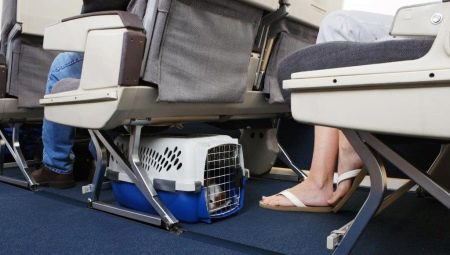
It happens that our pets need to change their location, whether it be a trip to the vet or out of town for nature. It happens that dogs follow their owners if they decide to change their place of residence to another city or country. In such situations, you need to be informatively savvy.
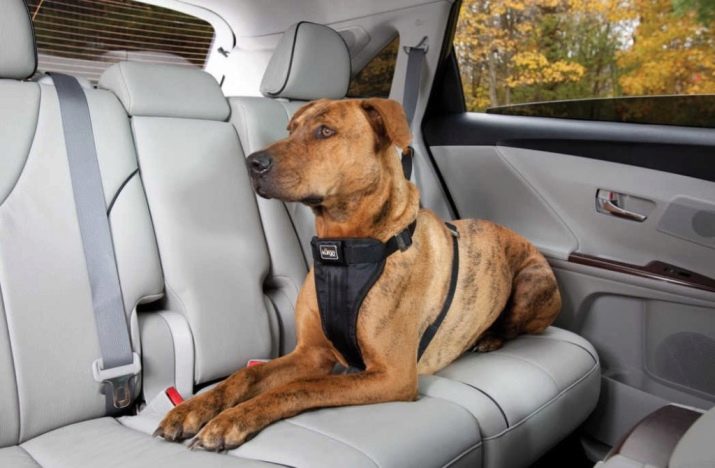
How to prepare an animal for transportation?
Any transport, even the shortest, is stressful for the dog. Therefore, it is necessary to prepare her for the trip in advance, so that she can easily transfer the road. If the animal is traveling for the first time, introduce it to the carrier. Just leave it open in the area where your pet is usually located. He will sniff his temporary home, and at the time of transportation it will not seem alien to him.
Even if the trip will last a short time, the dog must be walked in front of it. Spend a little more time on this than you always have. It is advisable not to give the animal food and water before the trip. It is generally recommended to abstain from food 4 hours prior to travel. But, if for some reason it is difficult to maintain such an interval, then it can be reduced to an hour.
For especially violent and impressionable breeds, before a long journey, sedatives are recommended as prescribed by a veterinarian. But this does not apply to the aircraft. Before the flight, it is forbidden to give dogs such means, because during the flight there is a change in pressure. Medicines can cause it to fall sharply, which can be fatal.

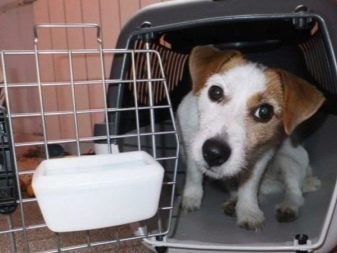
When your dog is about to travel by car, try to familiarize him with such transport in advance.The animal must get used to the smell of gasoline and the roar of the engine, so as not to be afraid of these specific nuances later.
Carrying requirements
There are many ways to transport your dog to its destination. If you use your own car for this, then there are no restrictions for you. You are free to transport your pet in anything and in any way, as long as it is comfortable.
If you are driving, then, most likely, you will need tools at hand. The most convenient device for transporting dogs is considered to be a cage. It is also used for transporting large rocks on the plane, in the luggage compartment.
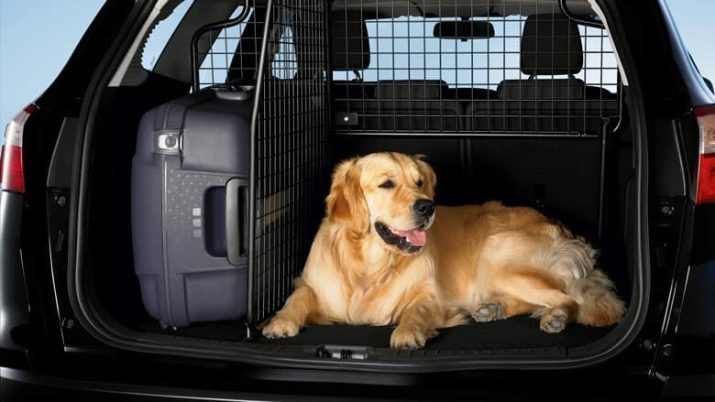
The basic requirements for a cage for transporting animals are as follows:
- material: durable plastic or metal, hypoallergenic;
- the cage must be large enough for the pet to turn 360 ° in it;
- a sufficient number of ventilation holes;
- the lock on the door, preferably not a hinged one, it is easy to knock it down;
- for especially large dogs, there are cages with wheels at the bottom, easily moving like a cart;
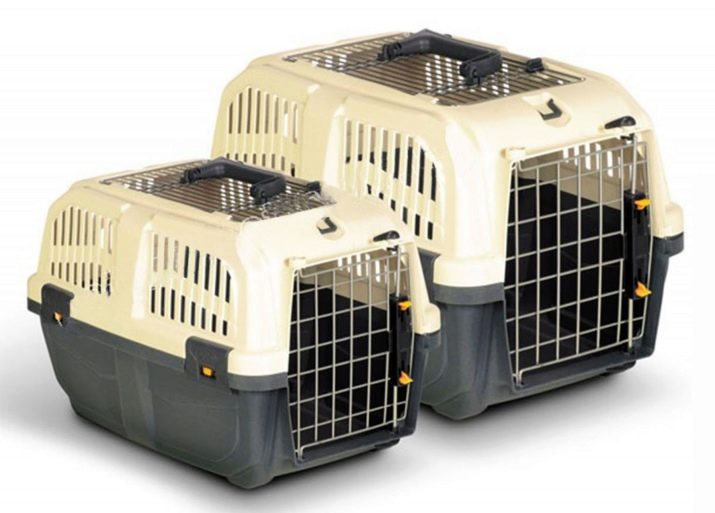
A soft blanket is placed at the bottom of such a cage and a bowl of water is placed if there is a long journey ahead. An auto hammock is also used for a car - this is a cape that is attached between the seats or to the handles. It is made of durable, water-repellent material and has secure fittings.
For transporting small dogs, there are special boxes or plastic containers. With such a device, it is very convenient to travel by car, and on the plane, and on the train, and on the bus. It must be made of durable material and have a well-secured handle. Adequate ventilation is essential. The box must be tightly closed and have enough room for the dog inside to turn around and stand up to its full height.
Also, furry travelers are transported in special bags that close well and have reliable handles, or wicker baskets. At the bottom, a soft bedding is placed in them, preferably moisture-absorbing.
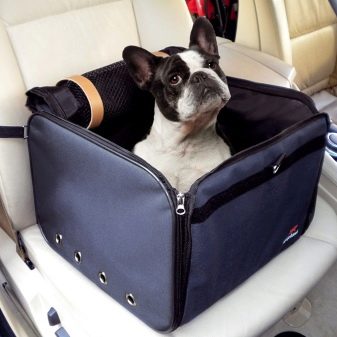
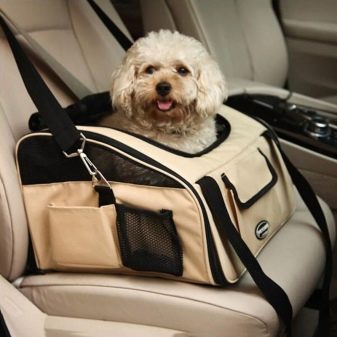
Basic rules of transportation
The main criteria for transporting furry friends are their convenience and safety. When transporting an animal on his own vehicle, these conditions must be maintained by the owner. However, not every dog breeder can boast of having his own car. In these cases, you can use simpler means. For example, a bicycle.
There are several attachments for cycling dogs: a basket, a dog bag, a trailer, and even a saddle. It is not recommended to use a regular bicycle basket as it is stiff and the pet may jump out of it. For motorcyclist dog breeders, there are also several options for giving your pet a breeze ride. Large dogs are placed in a stroller or trailer.
To carry a small animal on a motorcycle, there is a good arsenal of tools. This can be a backpack or a baby chest carrier. You can put the baby in the bosom. If we talk about special equipment, then they include a central case, a bag for the trunk or for a tank.


With a four-legged friend, you can even ride a snowmobile. There are few options, but they are still there. This is again a trailer that is attached to the back of the snowmobile. Another option: a box, wooden or plastic, is placed on the seat behind the driver's back, and the dog is seated there. Some transport furry ones simply by placing them between their legs on the seat. Warm and in control.
According to the current law, animals can be transported around the city and long distance by public transport. But it is necessary to comply with certain conditions established by law.
Each public mode of transport has its own separate rules for transporting animals. However, there are undeniable dogmas that are valid everywhere without exception.
- The owner of the dog is obliged to observe the sanitary and hygienic regime.The driver has the right to refuse to transport an animal whose fur and paws are heavily soiled.
- The dog must be muzzled (for large breeds) and with a collar.
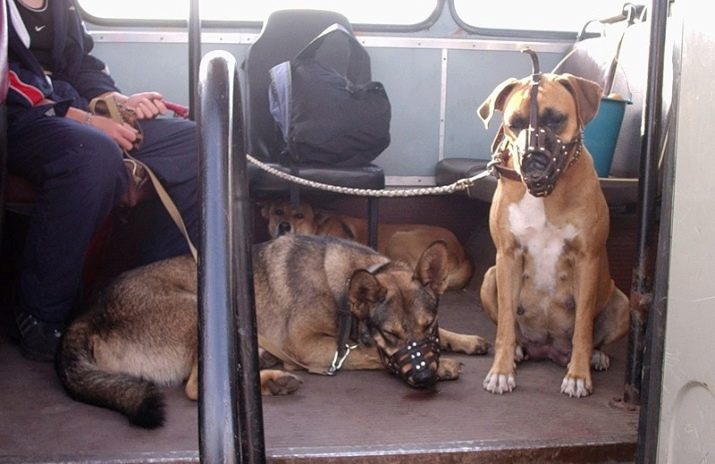
A passenger with a dog in public transport, such as a bus, train or subway, can hold their pet in their arms or in a container. There is no need to buy a separate ticket for the dog. A baggage ticket is required for large dogs. When transporting by bus, the owner must sit with his pet at the end of the cabin.
If we talk about minibuses, then transporting a large dog in them will be inconvenient for both the dog and the passengers. The driver may refuse to transport the animal if the dog walks freely around the cabin and causes discomfort to others, poses a threat to the life and health of other passengers. As for a guide dog or service dog, they do not require a travel card or documents. The animal must sit near the owner's feet in a muzzle and collar.
If you wish to travel with your pet in an intercity bus, you have every right to do so, subject to the rules of transportation and the availability of relevant documents.
If the driver resists your desire, demand from him a written refusal, indicating the reason for the refusal and declare your intention to contact the police. As a rule, after such actions, carriers humble their ardor. Such rules for the carriage of animals in public transport are valid throughout Russia.

To ride the train with your pet, you should also know some of the nuances. If you are the owner of a small decorative dog that fits into a 180x180x180cm container, you will have to purchase a ticket only for traveling on long-distance trains. You may also be asked to redeem the entire compartment.
For large tetrapods, there are several options:
- buy a separate ticket;
- use special carriages for transporting dogs;
- buy out the entire compartment;
Do not forget about the muzzle and the observance of hygiene rules.
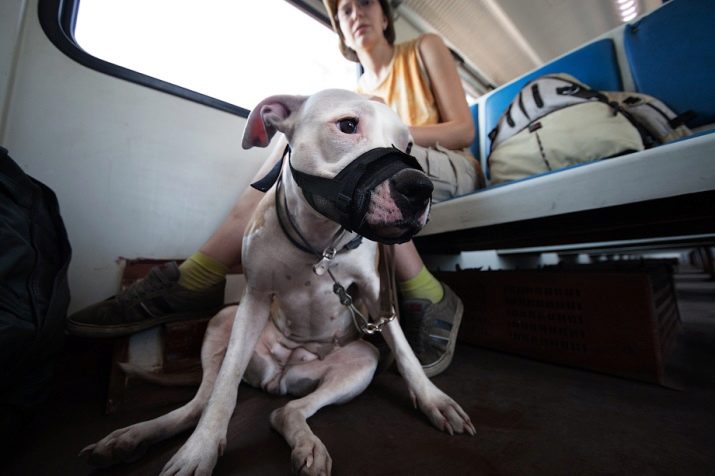
The cost of a train ticket for your furry friend will be from 150 to 750 rubles. If you move around the territory of the Russian Federation, then the age of your pet does not matter. However, for travel abroad, a certain limit may be imposed. For example, in some countries it is not allowed to take out puppies up to 3 months old.
Required documents for dogs
If you are traveling with your pet across the territory of Russia, then you will not need any special documents. Their list includes 2 main papers. This is a veterinary passport with a note of vaccinations, and a health certificate obtained from a veterinarian. Both documents must be certified with seals.
Before leaving with a pet to another country, it is recommended that you familiarize yourself with the list of necessary "dog" documents to enter it. The standard package includes the following documents.
- Veterinary passport of international standard.
- Veterinary certificate No. 1.
- For EU countries - the corresponding certificate. It is received through the state veterinary clinic and the Rosselkhoznadzor. It is valid for 5 days.
To obtain an international veterinary passport, you need to issue a state-recognized certificate, and then exchange it for an international one at the pre-control point. Such a document is valid for 3 months.


Features of transportation abroad
To transfer a pet from one country to another, you will have to comply with international regulations for the transport of animals.
- Without the aforementioned package of documents, your pet will not be allowed into another country.
- Another prerequisite is the chipping of the dog. If it is lost, it is easy to obtain information about the owner using the embedded chip.
- Special rules apply when transporting your pet overseas by plane. In this case, the dogs travel in the cabin or in the luggage compartment.Small dogs, weighing up to 8 kg, fly in the cabin. They are located in a special container.
- Larger dogs are transported in the baggage department. They are placed in cages or containers with a volume of 1.55x1.55x1.55 m, in compliance with all the requirements for them. Containers are registered in a special window. A barcode is stuck on them.
- If you are planning a flight with a dog, you must notify the airline about this one and a half days before departure. Immediately before the flight, the dog undergoes a veterinary examination at the airport.
It is very important to follow the rules for importing animals of the country where you are going to fly. They can differ from each other.
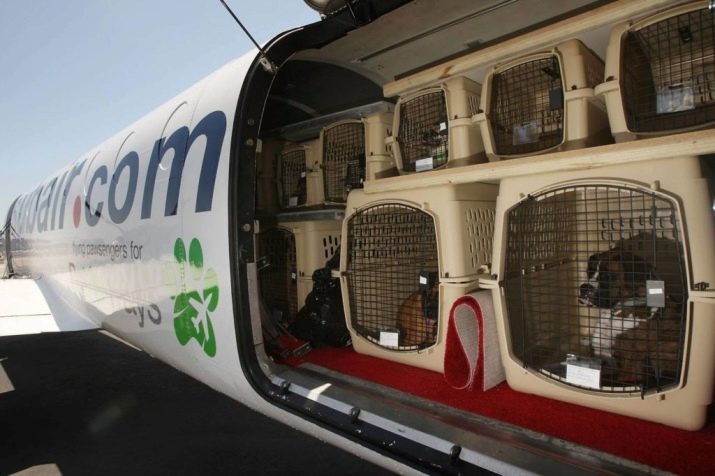
Tips & Tricks
When transporting your pet by any means of transport, always follow a simple but important rule: your dog should be comfortable, even if the distance is short.
Take all measures to create a favorable microclimate for the dog so that it does not overcool, but at the same time does not suffer from stuffiness. Try not to feed the animal on the way. If there is such a need, do it at the moment of stops. It is allowed to give the dog some water on the way. On a long journey, take with you a veterinary first aid kit, collected on the recommendation of a doctor.
Carrying a dog is like traveling in a vehicle with a child. These creatures are no less impressionable than children and require increased attention. But, observing all the basic conditions, the transportation of your pet will not cause him much discomfort, regardless of the distance.
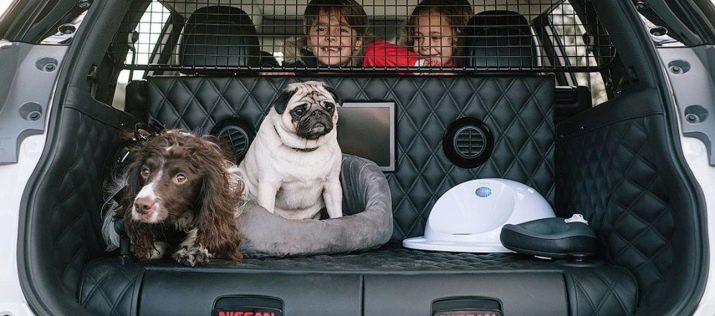
For information on how to transport a dog on the train, see the next video.






































